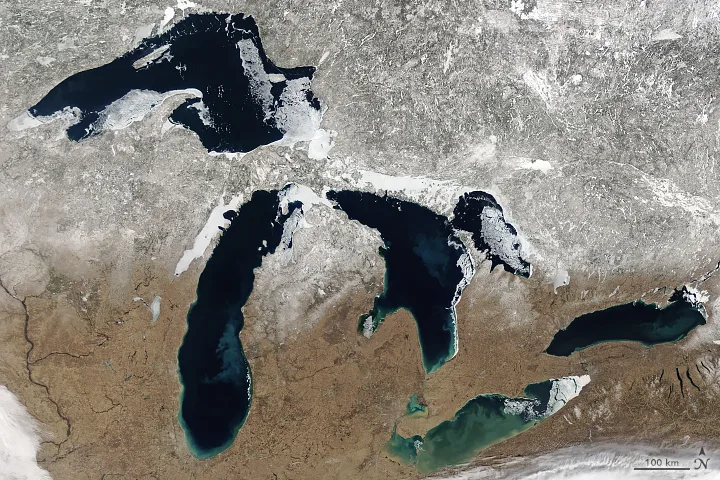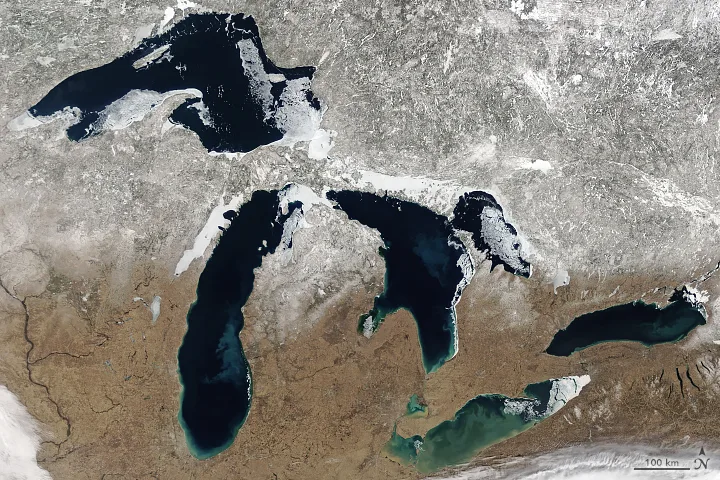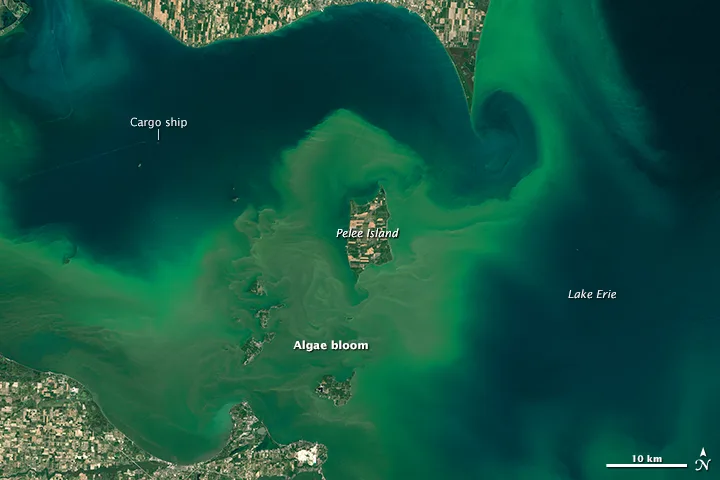
A glimpse at a dire future for the Great Lakes
Millions of people rely on the thriving lakes for water, food, livelihood, or recreation
In a warming world, the Great Lakes face a dire future, and with them, the millions of people, including 10 million Canadians, that live near them and rely on them for their livelihoods.
Everything including ice loss, erratic and more severe precipitation, declining water quality, and economic and infrastructure disruption are all in the cards unless climate change and other harmful human activity can be brought to heel, according to a new report released by the U.S.-based Environmental Law and Policy Center earlier this month.
“We should not and cannot take the vast natural resources of the Great Lakes for granted. Allowing the Great Lakes to be degraded through human activities, including climate change, is not an option,” the report’s executive summary reads.

Image: NASA Earth Observatory.
The lakes have already experienced numerous changes as average global temperatures have risen about one degree celsius over the last century -- with warming accelerating over the past decades. And those problems are only expected to worsen if warming continues.
From 1901 to 2015, for example, the incidence of severe rain and snow episodes jumped 10 per cent, with more and more “unusually large” events, according to the report, and will likely be more frequent as winters and springs become wetter -- meaning more flood events for rain, and more intense lake-effect snow events.
WATCH BELOW: INTENSE IMAGES FROM BUFFALO'S INTENSE 2014 SNOWSTORM
The latter are likely to be more damaging, particularly in the snowbelts of Lake Ontario and the upper western areas of New York State, “where three- and four-feet snowstorms are already routine.”
That’s due to the fact lake ice has generally been in decline over the last few decades -- as much as 75 per cent depending on the lake, according to Great Lakes Environmental Research Laboratory data reported by CBC News -- though interspersed with years when lake ice levels have been healthy and even relatively high. See the video below for how ice cover has changed over the decades:
The decline of lake ice has other knock-on effects. Coastal ice cover has the effect of lessening the effects of shore erosion, and general ice cover also protects the lakes’ winter ecosystem.
In the summer, warming lake water temperatures have their own problems, making toxic algae blooms more common -- such as in 2014, when one such bloom left the city of Toledo, Ohio, without access to safe local drinking water for three days.

Algae bloom in Lake Erie, July 28, 2015. NASA Earth Observatory.
Lake levels will also fluctuate in the decades ahead. Though spring and winter will be wetter, leading to potential flooding, the summer months are expected to be an average 5-15 per cent less for the Great Lakes region, leading to more common drought periods.
Those water level fluctuations create more risk for damage to coastal infrastructure, cause “challenges” for hydroelectric power generation, and can make navigation in shallower waters trickier.
Those are just some of the issues the report’s authors foresee in the coming century, but they also have 11 suggested policy solutions, centred around promoting renewable energy, energy efficiency, electric vehicles, reducing emissions and farm runoff, and more funding for green infrastructure (you can read the more detailed list here).












